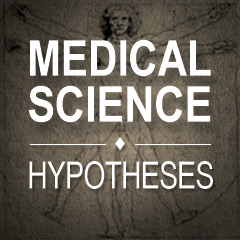Get your full text copy in PDF
James Randall Kennedy
Med Sci Hypotheses 2017; 4:7-9
DOI: 10.12659/MSH.902663
ABSTRACT: Ebola is a septicemic, inflammatory, and hemorrhagic infection caused by a membrane-covered RNA virus with phosphatidylserine (PS) molecules and regularly spaced projections of a glycoprotein trimer displayed on its surface. The PS molecule plays an essential role in the infection of immune cells by the virus, its coagulopathy, and its inflammation. It is hypothesized that the ability of annexin V to cloak PS can play a role in treating all 3 conditions. Annexin V binds to PS and polymerizes to form a shield over PS on the Ebola virus so that it cannot bind to immune cells, and it blocks the coagulation cascade where coagulation factors must bind to PS on activated platelets in order for the cascade to function, and it blocks both early mediated and late mediated inflammation. The virus adhesion to immune cells, coagulopathy, and inflammation suppression will be addressed separately.
Keywords: Annexin A5, Disseminated Intravascular Coagulation, Phosphatidylserines, Sepsis
